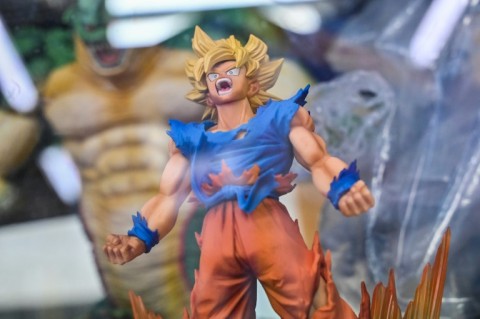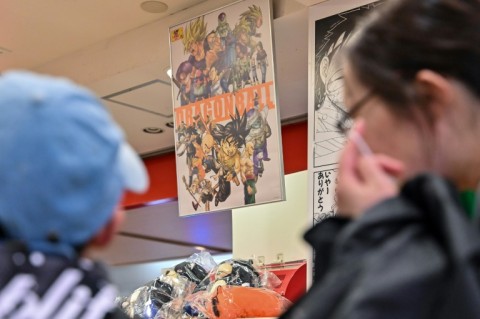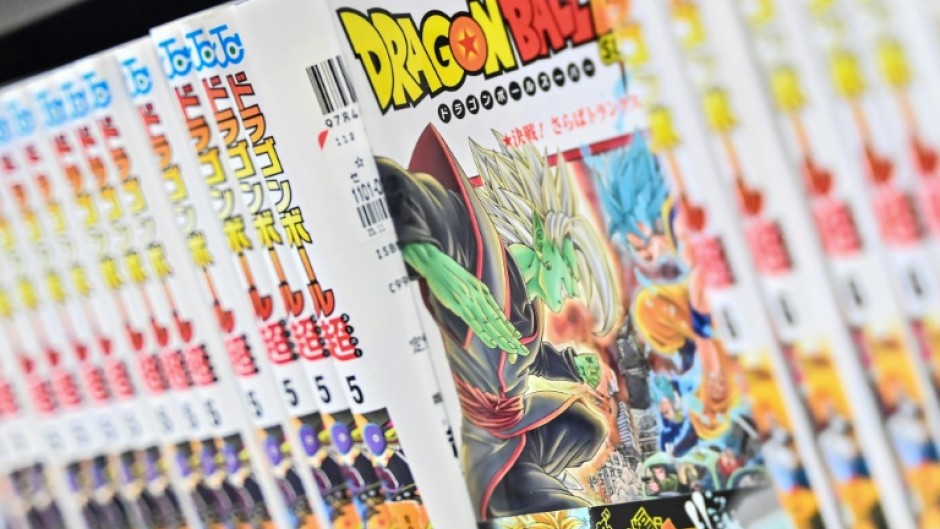TOKYO - Kung-fu-style fights, a monkey-tailed boy and the search for seven magical dragon balls: since its debut in 1984, Japan's "Dragon Ball" manga has captured imaginations worldwide.
It grew from a black-and-white serialised comic into one of the most successful manga and anime franchises, beloved by generations of fans and boosting the Japanese manga industry.
The shock death of its creator Akira Toriyama, aged 68, was announced Friday by his production team. Here are four things to know about "Dragon Ball":
- 260 million copies -
The original "Dragon Ball" manga was published for over a decade in Japan's weekly Shonen Jump magazine, aimed at teenage boys.
Part comedy, part absurdist adventure, the series fused martial arts action with a story influenced by the classic Chinese tale "Journey to the West".
Its hero, a monkey-tailed boy with spiky black hair called Son Goku, is trained by a turtle-sage and embarks on a quest to find seven mystical dragon balls.
Over 519 chapters, the focus turns to the creative ways Goku defeats increasingly terrifying enemies, from sending them into a vortex to powering up until his hair turns gold.
The comics have sold more than 260 million copies in Japan and worldwide, according to publisher Shueisha.
- 'Dragon Ball Z' -
The first part of the manga series was turned into an anime cartoon also called "Dragon Ball" from 1986, featuring actress Masako Nozawa as the voice of Son Goku.
On Friday, her talent agency said she was "too devastated" to comment on Toriyama's death.

Dubbed in different languages, the show became a global sensation, capturing children's hearts with its madcap battles won by the small hero as his power grows.
Then "Dragon Ball Z", the adaptation of the later part of the manga, took the series' popularity to new levels with planet-destroying fights and displays of formidable strength.
It ran from 1989 to 1996, and introduced the world to the alien warrior "Saiyan" race -- reportedly inspired by the Japanese word for vegetable, "yasai".
- Films, games, more -
The massive global success of the "Dragon Ball" manga and anime birthed a media empire with spin-offs including films, video games, trading cards and collectible figurines.
Not all were a hit, however, with the live-action 2009 movie "Dragonball Evolution" flopping at the box office and attracting withering reviews.

Nonetheless, the "Dragon Ball" juggernaut continued, including with the anime "Dragon Ball Super" which aired from 2015 to 2018.
The franchise has been hugely influential, anime journalist Tadashi Sudo told AFP.
"Many people -- not only creators in Japan, but those abroad -- saw in his works the culmination of what entertainment should be like," Sudo said of Toriyama's oeuvre.
- Criticism -
Despite its global popularity, "Dragon Ball" has also been controversial due to its depiction of violence and sexual innuendo.
The anime series was censored in many countries -- including the United States and France -- to remove or edit scenes that include nudity, gore and sexual harassment.
Critics have also highlighted the formulaic nature of the "Dragon Ball" stories, with the New York Times calling it "repetitive and predictable".
Even so, "it's difficult to overstate how exquisitely gratifying that formula can be", the newspaper said in 2022.
bur-kaf/aha
By Katie Forster

